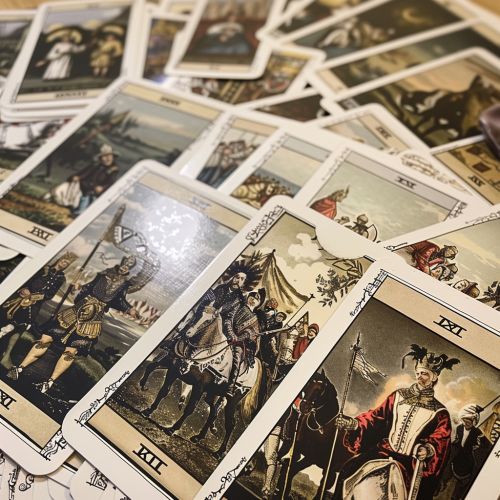Tarot
Origins and History
The origins of the Tarot are shrouded in mystery, with theories suggesting roots in ancient Egypt, medieval Europe, and even Kabbalistic Judaism. The first documented tarot packs were recorded between 1440 and 1450 in Milan, Ferrara, and Bologna when additional trump cards with allegorical illustrations were added to the common four-suit pack. These new decks were called carte da trionfi, triumph cards, and the additional cards known simply as trionfi, which became "trumps" in English.


Structure and Symbolism
A standard tarot deck consists of 78 cards divided into two sections: the Major Arcana and the Minor Arcana. The Major Arcana consists of 22 cards, each representing life's karmic and spiritual lessons. They are also known as trump cards. The Minor Arcana consists of 56 cards and is further divided into four suits: Cups, Pentacles, Swords, and Wands. Each suit has ten numbered cards and four court cards, namely the King, Queen, Knight, and Page or Jack.
Tarot and Divination
Tarot cards are widely used as a tool for divination, a means to predict future events or interpret past or present situations. The practice of tarot divination is often referred to as "reading" or "tarot reading". A tarot reading involves a seeker - the person who is looking for answers, and a reader - the person who knows how to interpret the cards.
Tarot and Psychology
The tarot has also been viewed from a psychological perspective, notably by Carl Jung. Jung saw the tarot as representing different archetypes of the human experience. He believed that the symbolism of the tarot reflected the inner truths and themes of the human subconscious.
Tarot in Popular Culture
Tarot cards have been featured in many forms of media such as books, films, and video games. They often appear in contexts related to magic, witchcraft, or fortune-telling, reflecting their historical associations with the occult and divination.
